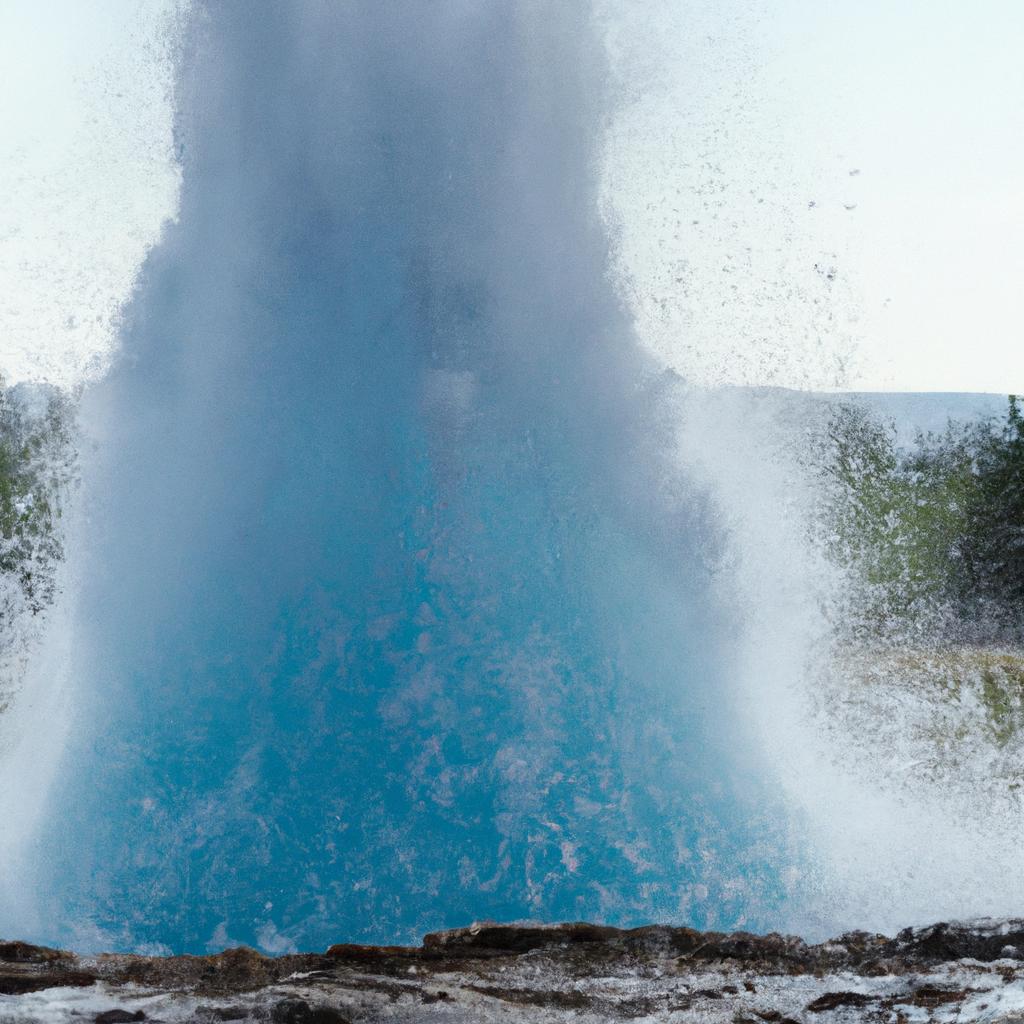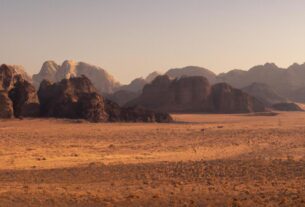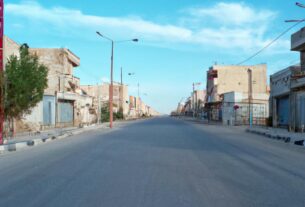If you’re a nature enthusiast, you’ve undoubtedly heard of Strokkur Geyser. Nestled in the geothermal area of Haukadalur, Iceland, this natural marvel reigns as one of the country’s most sought-after tourist destinations. Every few minutes, it erupts, spouting scalding water up to remarkable heights of 20-30 meters into the air, leaving spectators in awe.
Strokkur Geyser’s significance stretches far beyond its sheer beauty. In fact, the very term “geyser” was derived from this remarkable location, making it the birthplace of the geological term we employ today. The name “Strokkur” translates to “churn,” accurately portraying the bubbling water before each eruption.
This geyser’s history can be traced back to the 13th century, when it was first mentioned in Icelandic literature. However, it wasn’t until the 19th century that it garnered international attention. In 1835, an earthquake struck, damaging the geyser and causing it to cease erupting. It took until 1896 for a local farmer named Bjarni Sæmundsson to clear the geyser’s channel, ultimately reviving its glorious eruptions.
Today, Strokkur Geyser magnetizes visitors not only with its natural allure but also with its cultural and historical significance. As a symbol of Iceland’s geothermal power, its regular eruptions serve as a reminder of the nation’s extraordinary geological landscape.
In the following sections, we embark on an exploration of Strokkur Geyser, unraveling its location and geology, delving into its history and cultural pertinence, providing tourist information for a memorable visit, and examining the environmental impact it faces, as well as the sustainability efforts to protect it. Join me as we unearth the wonders of this exceptional natural phenomenon.
Location and Geology
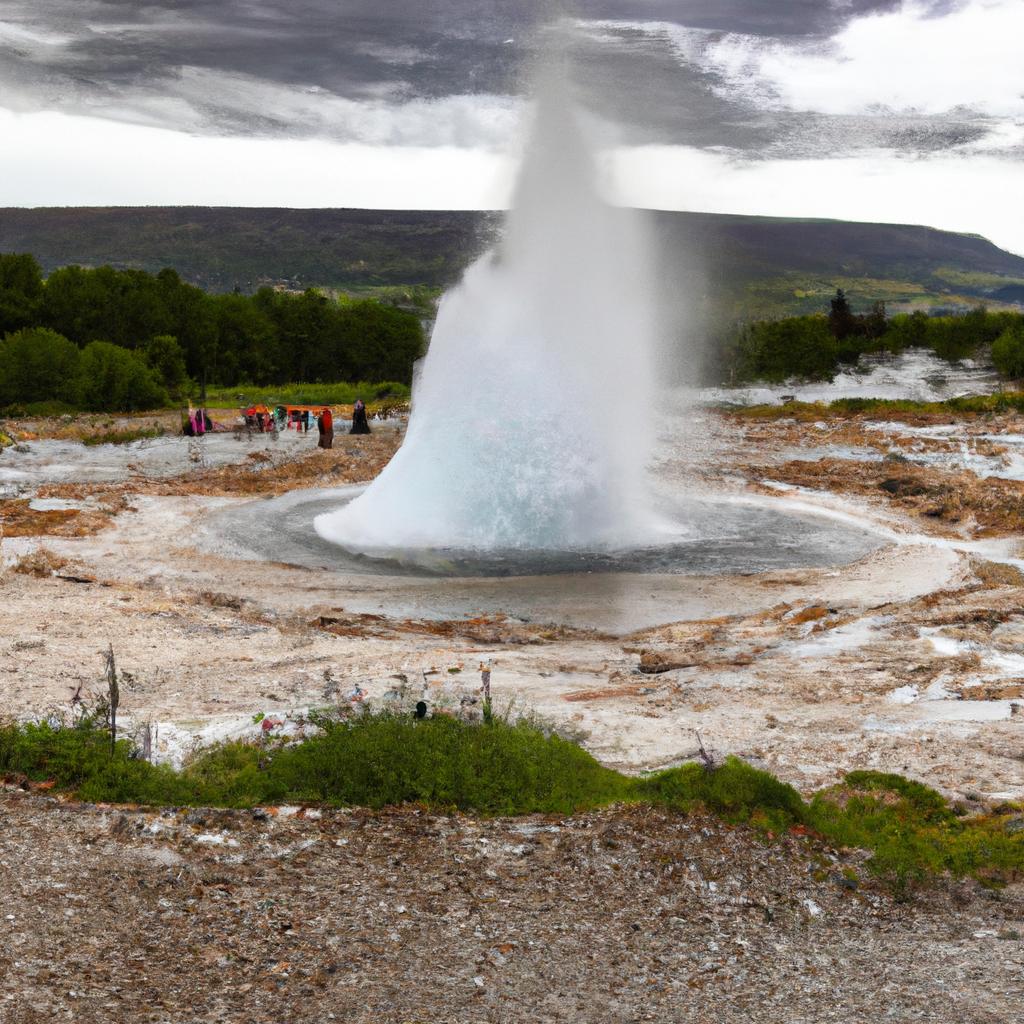
Description of the Location of the Strokkur Geyser
Tucked away in the enchanting Haukadalur valley, Strokkur Geyser reigns as a highlight of Iceland’s Golden Circle. This geothermal area lies approximately 100 kilometers from Iceland’s capital, Reykjavik, and can be conveniently reached by car or bus. Visitors are treated to breathtaking natural landscapes, including mountains, rivers, and hot springs, making it a utopia for nature lovers and photographers alike.
Overview of the Geology of the Area Surrounding the Geyser
The geothermal area encircling Strokkur Geyser is part of the Hengill volcanic system, situated on the Mid-Atlantic Ridge. This ridge denotes a divergent plate boundary, where the North American and Eurasian tectonic plates converge. The region boasts a high geothermal gradient, resulting in an abundance of hot springs and geysers.
The Haukadalur valley possesses a distinctive attribute: it is home to three geysers, Strokkur Geyser being one of them. Additionally, the area boasts other geothermal features, including fumaroles, mudpots, and hot springs. This geological marvel is a testament to millions of years of volcanic activity that have shaped Iceland’s captivating terrain.
Explanation of How the Geyser Works and Why it Erupts
Strokkur Geyser operates as a hot spring, erupting approximately every 6-10 minutes and propelling water up to 30 meters into the atmosphere. This geyser is intricately connected to a reservoir of hot springs, which are heated by the magma chamber beneath the surface. The water within this reservoir is superheated, meaning it exceeds its boiling point without vaporizing due to the pressure.
When the water in the reservoir reaches a critical point, it begins to boil, forming steam bubbles that ascend towards the surface. The pressure generated by these steam bubbles eventually triggers an eruption, expelling water and steam into the air. This remarkable display lasts mere seconds before the water and steam cascade back into the reservoir, commencing the cycle anew.
In the subsequent section, we embark on a voyage delving into the history and cultural significance of Strokkur Geyser.
Strokkur Geyser’s Cultural Significance and Influence on Icelandic Culture
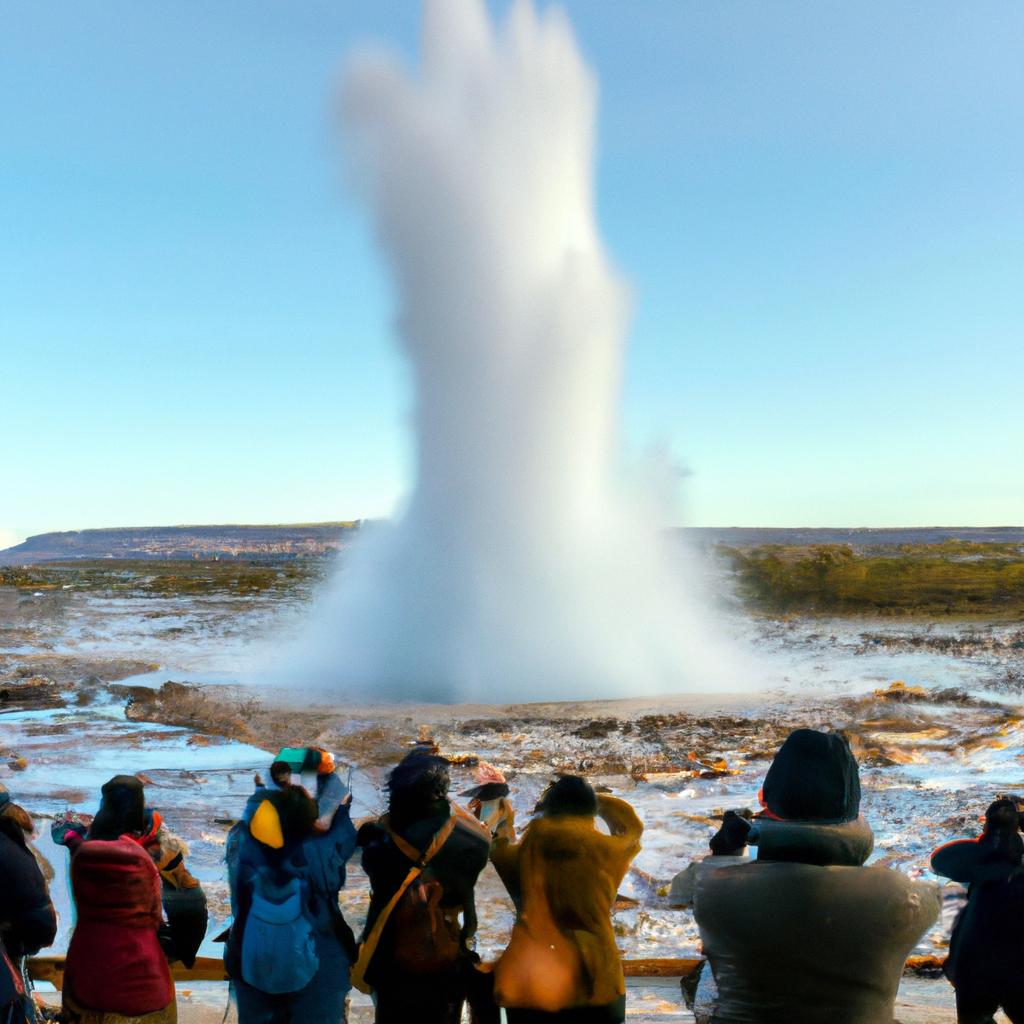
Strokkur Geyser stands as an intrinsic part of Iceland’s cultural heritage and identity. It surpasses being a mere natural spectacle and serves as an emblem of the nation’s geothermal prowess and its unrivaled geological landscape. The rhythmic eruptions of this geyser have undoubtedly influenced Icelandic culture, permeating literature and folklore.
Overview of Cultural Significance
Within Iceland, Strokkur Geyser holds immeasurable cultural significance. The country boasts a rich history of utilizing geothermal energy for heating and electricity, and this geyser emerges as a potent symbol of this invaluable resource. Furthermore, it serves as a testament to Iceland’s distinctive geological landscape, which has intricately molded the country’s culture and way of life.
Historical Facts and Legends
Strokkur Geyser has been incorporated into Icelandic literature and folklore for centuries. The renowned Icelandic poet Snorri Sturluson depicted the geyser’s eruptions in his work, “Heimskringla,” describing how they caused the earth to tremble and nearby rivers to flood.
Another captivating legend is associated with this geyser, suggesting that it harbors a spirit capable of controlling the water’s temperature. According to this myth, if the spirit becomes enraged and raises the temperature excessively, the geyser’s eruptions will cease.
Influence on Icelandic Culture
Strokkur Geyser’s influence on Icelandic culture permeates various artistic forms. Literature, art, and even music have all been inspired by this mesmerizing phenomenon. Icelandic poet Steinn Steinarr, renowned for his works, penned a poem encapsulating the geyser’s eruptions as a “boiling waterfall.”
This geyser has also permeated Icelandic cuisine, with locals utilizing geothermal heat to prepare traditional dishes such as rye bread and smoked lamb. Additionally, Strokkur Geyser has evolved into a prime tourist destination, captivating visitors from across the globe who seek to witness its splendor and learn about Iceland’s exceptional geological landscape.
In conclusion, Strokkur Geyser extends beyond being a natural wonder. It symbolizes Iceland’s cultural heritage and national identity, with its rhythmic eruptions molding the country’s culture and folklore. Its profound significance underscores the importance of conserving Iceland’s exceptional geological landscape for future generations.
Tourist Information
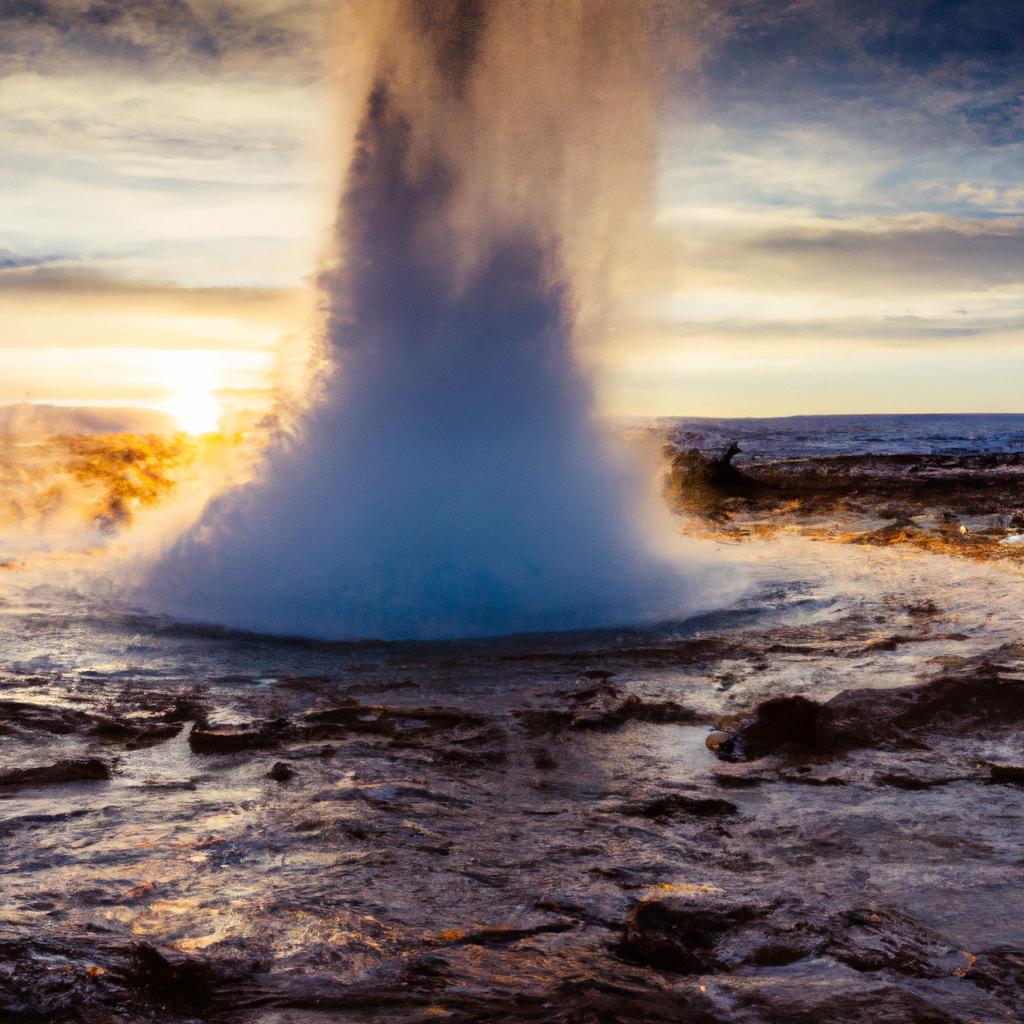
How to Visit the Strokkur Geyser
If you’re planning a trip to Iceland, seize the opportunity to witness the awe-inspiring Strokkur Geyser. Situated in the Haukadalur Valley, approximately 100 km from Reykjavik, the nation’s capital, this mesmerizing wonder is best reached by car. Rental car companies in Reykjavik ensure a convenient means of transportation. Alternatively, you may opt for a guided tour that encompasses a visit to the geyser.
The geothermal field welcomes visitors throughout the year, and there are no admission fees. Nevertheless, it is crucial to adhere to the rules and regulations stipulated by Icelandic authorities. This ensures the safety of visitors and the preservation of this magnificent site.
Overview of Nearby Attractions and Activities
Strokkur Geyser shares its geothermal field in Haukadalur with other captivating features. Numerous geysers, mud pools, and hot springs beckon exploration. The renowned Geysir, after which all other geysers are named, stands as a significant sight, despite its current inactivity.
Another nearby gem is the majestic Gullfoss waterfall, one of Iceland’s most exquisite natural wonders. Located approximately 10 km from the geyser, it is readily accessible by car or bus.
Thrill-seekers seeking more adventure may indulge in outdoor activities, including hiking, horseback riding, and snowmobiling, amplifying the excitement within this captivating region.
Tips and Recommendations for Visitors
When visiting Strokkur Geyser, it is essential to dress appropriately, considering the unpredictable Icelandic weather. Bring warm, waterproof clothing to ensure maximum comfort.
Moreover, following safety guidelines while exploring the geothermal field is of utmost importance. The water within the area reaches scorching temperatures, necessitating visitors to remain on designated paths to avoid accidents.
Lastly, it is advisable to visit the geyser early in the morning or late in the afternoon to avoid crowds. With eruptions occurring approximately every 6-8 minutes, you will have ample time to relish its magnificence.
In the next section, we delve into the environmental impact tourism imposes on Strokkur Geyser, and the collective sustainability efforts to safeguard its existence.
Environmental Impact and Sustainability

Tourism’s Impact on Strokkur Geyser and Surrounding Area
As one of Iceland’s prime tourist destinations, Strokkur Geyser attracts a multitude of visitors annually. While tourism brings undeniable benefits, it also poses a significant impact on the environment. The continuous foot traffic and carbon emissions from transportation contribute to the erosion of the geothermal area surrounding the geyser.
To mitigate the environmental impact of tourism, the Icelandic government has implemented measures to regulate visitor flow. The area surrounding the geyser is now accessible solely on foot, with visitors encouraged to adhere to designated paths to prevent further erosion. Additionally, a fee system has been implemented to fund maintenance and conservation efforts.
Sustainability Efforts to Preserve Strokkur Geyser and Its Surroundings
Preserving Strokkur Geyser and its surroundings demands dedicated sustainability efforts. The Icelandic government has invested in renewable energy sources to reduce reliance on geothermal energy. The nation aspires to achieve carbon neutrality by 2040, with geothermal energy playing a vital role in this endeavor.
Additionally, a conservation program has been enforced to protect the wildlife and vegetation in the geysers’ vicinity. This program ensures the ecosystem remains intact and unharmed by the influx of tourists.
Recommendations for Responsible Tourism Practices
As visitors, we bear the responsibility of minimizing our impact on the environment. Here are some essential guidelines to follow when visiting Strokkur Geyser:
- Stick to designated paths, refraining from trampling fragile vegetation.
- Dispose of waste responsibly, refraining from littering.
- Minimize your carbon footprint by utilizing public transportation or carpooling.
- Respect the wildlife, refraining from disturbing them.
- Support local businesses committed to sustainable practices.
By adhering to these recommendations, we can ensure the pristine preservation of Strokkur Geyser for generations to come. Let us work collectively to safeguard the environment and savor the beauty of this extraordinary natural phenomenon.
Conclusion
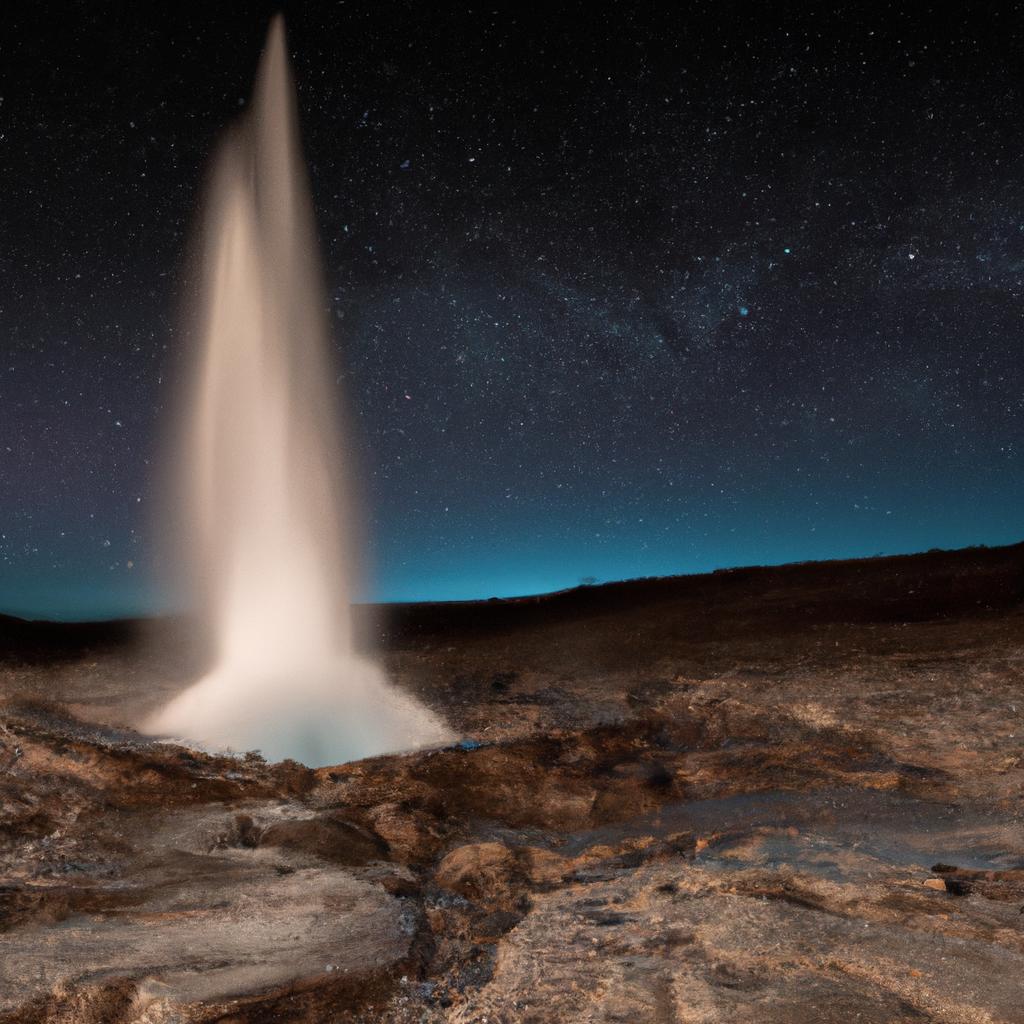
To conclude, Strokkur Geyser stands as a testament to Iceland’s remarkable natural wonders, woven intricately into the country’s cultural and historical tapestry. Its rhythmic eruptions serve as a poignant reminder of Iceland’s unparalleled geological landscape and the awe-inspiring power of nature. With its breathtaking surroundings and neighboring attractions, Strokkur Geyser is an essential destination for any visitor to Iceland.
However, as with any beloved tourist destination, it is imperative to remain conscious of the impact we have on the environment. Practicing responsible tourism and taking steps to preserve the natural beauty of Strokkur Geyser is our collective duty, allowing future generations to revel in its splendor.
At TooLacks, we are passionately committed to promoting sustainable tourism, encouraging individuals to explore the marvels of nature in an environmentally conscious manner. We hope this article has inspired you to delve deeper into the wonders of Strokkur Geyser and contemplate a visit to this extraordinary natural phenomenon.
If you plan to visit Strokkur Geyser, remember to immerse yourself in the experience responsibly, respect the environment, and diligently follow the guidelines provided by park authorities. By working hand in hand, we can ensure this natural wonder remains pristine for years to come. To learn more about TooLacks, visit our website here.
